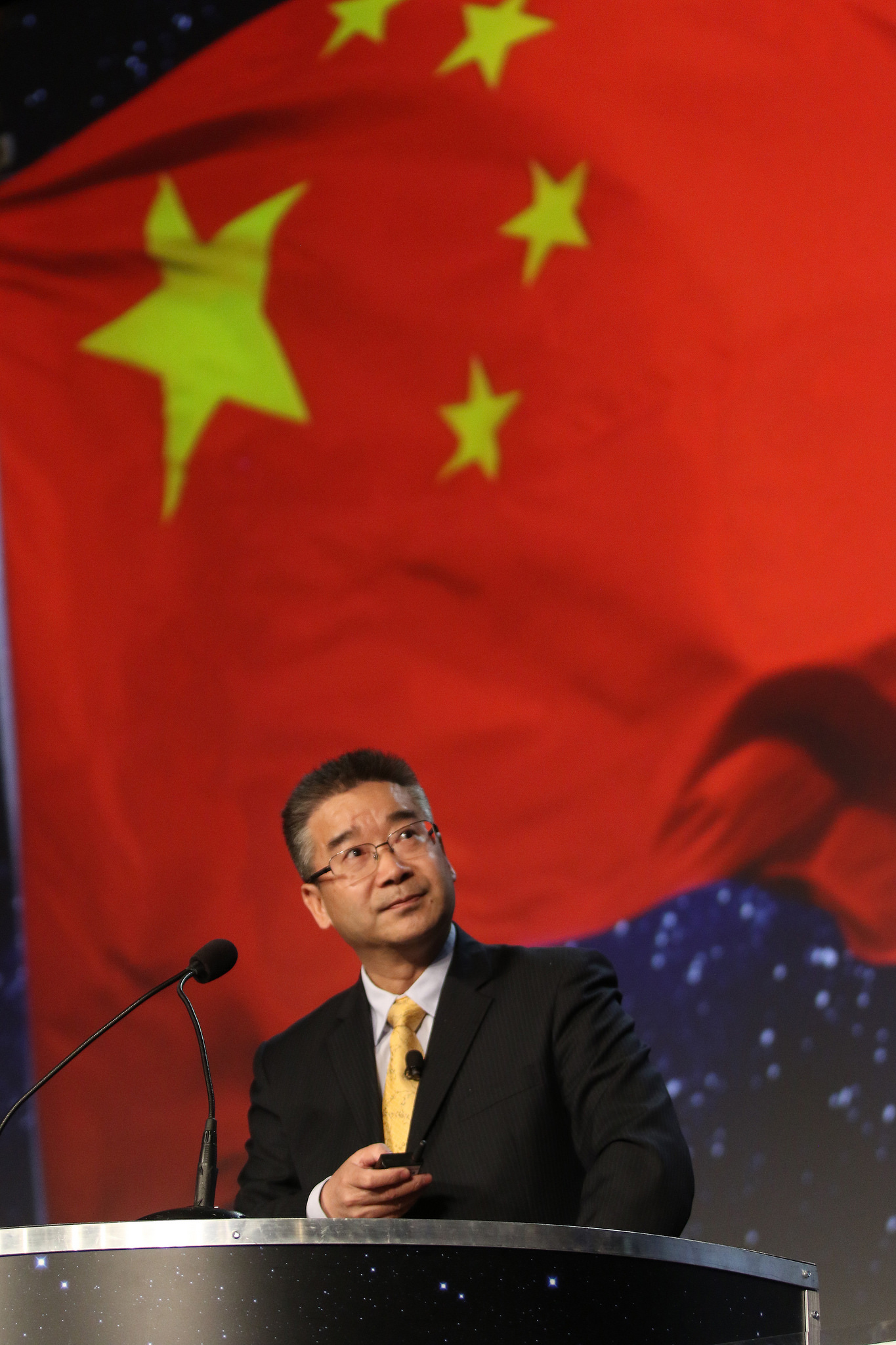China's National Space Agency Boss Outlines Space Exploration Agenda

COLORADO SPRINGS — China is pushing forward on a number of space fronts, including milestone-making robotic missions to the moon, as well as scoping out an automated Mars sample-return mission by 2030.
Yulong Tian, secretary-general of the China National Space Administration (CNSA), spoke here April 5 during the 33rd Space Symposium.
CNSA is the governmental organization of People's Republic of China responsible for the management of space activities for civilian use and international space cooperation with other countries. [U.S., China Will Meet This Year to Talk Space Debris]
Yulong reviewed major elements of China's 2016 "Space White Paper" — a sweeping outline for the next five years of robotic and manned spaceflight, Earth and space science, and an emerging, new thrust in commercial space.
"China is currently making policy for commercial space activities," Yulong said.
Concerning China's Beidou navigation system, "by 2020, 30 satellites can provide services for global users," Yulong said.
Yulong said China plans to orbit "more than 30" meteorological, ocean- and land-monitoring spacecraft in the coming decade.
Get the Space.com Newsletter
Breaking space news, the latest updates on rocket launches, skywatching events and more!
In reviewing China's interest in working with other nations, Yulong said that the country has signed more than 100 space-cooperation agreements with 30 countries and space agencies, and in the future "intends to cooperate with governments around the world," in climate change research, disaster prevention, space safety, and deep space exploration.
China is developing plans for deep space exploration over the next decade that will involve Jupiter, Venus, and asteroid exploration.
On China's manned space program agenda, Yulong said a cargo supply ship is being readied for launch aboard a Long March 7 rocket this month. It will auto-dock with the Tiangong-2 space lab currently orbiting Earth unoccupied, but the mission is a step forward in building and resupplying a larger space station in 2022, he said.
Yulong said that work remains underway to ready the Chang'e-5 lunar probe for an end of November liftoff from the Wenchang Space Launch Center in southern China's Hainan Province. The moon-bound probe will be boosted by a heavy-lift carrier rocket, the Long March 5.
Chang'e-5 is China's first automated moon surface sampling mission and consists of four parts: an orbiter, a lander, an ascender and a returner.
The lander will place samples of the moon in the ascender, which then departs the lunar surface to dock with the moon-circling orbiter and the returner. The samples are to be transferred to the returner for a journey back to Earth.
Also on China's Moon exploration agenda, Yulong said, is the Chang'e-4 that's slated to be launched in 2018. That probe is targeted to achieve the first-ever soft-landing on the far side of the moon, Yulong said.
Yulong said that China approved in 2016 a robotic Mars lander to be launched in 2020. A second step is a return sample from Mars by 2030, he said.
Asked about the challenges ahead in lobbing Mars samples back to Earth, Yulong expressed confidence.
"The Mars exploration for China…we have solved all the technical problems," Yulong told SpaceNews.
"We're on track," he said, but added that the investment in the Mars sample effort is still being pursued.
This story was provided by SpaceNews, dedicated to covering all aspects of the space industry.
Join our Space Forums to keep talking space on the latest missions, night sky and more! And if you have a news tip, correction or comment, let us know at: community@space.com.

Leonard David is an award-winning space journalist who has been reporting on space activities for more than 50 years. Currently writing as Space.com's Space Insider Columnist among his other projects, Leonard has authored numerous books on space exploration, Mars missions and more, with his latest being "Moon Rush: The New Space Race" published in 2019 by National Geographic. He also wrote "Mars: Our Future on the Red Planet" released in 2016 by National Geographic. Leonard has served as a correspondent for SpaceNews, Scientific American and Aerospace America for the AIAA. He has received many awards, including the first Ordway Award for Sustained Excellence in Spaceflight History in 2015 at the AAS Wernher von Braun Memorial Symposium. You can find out Leonard's latest project at his website and on Twitter.










